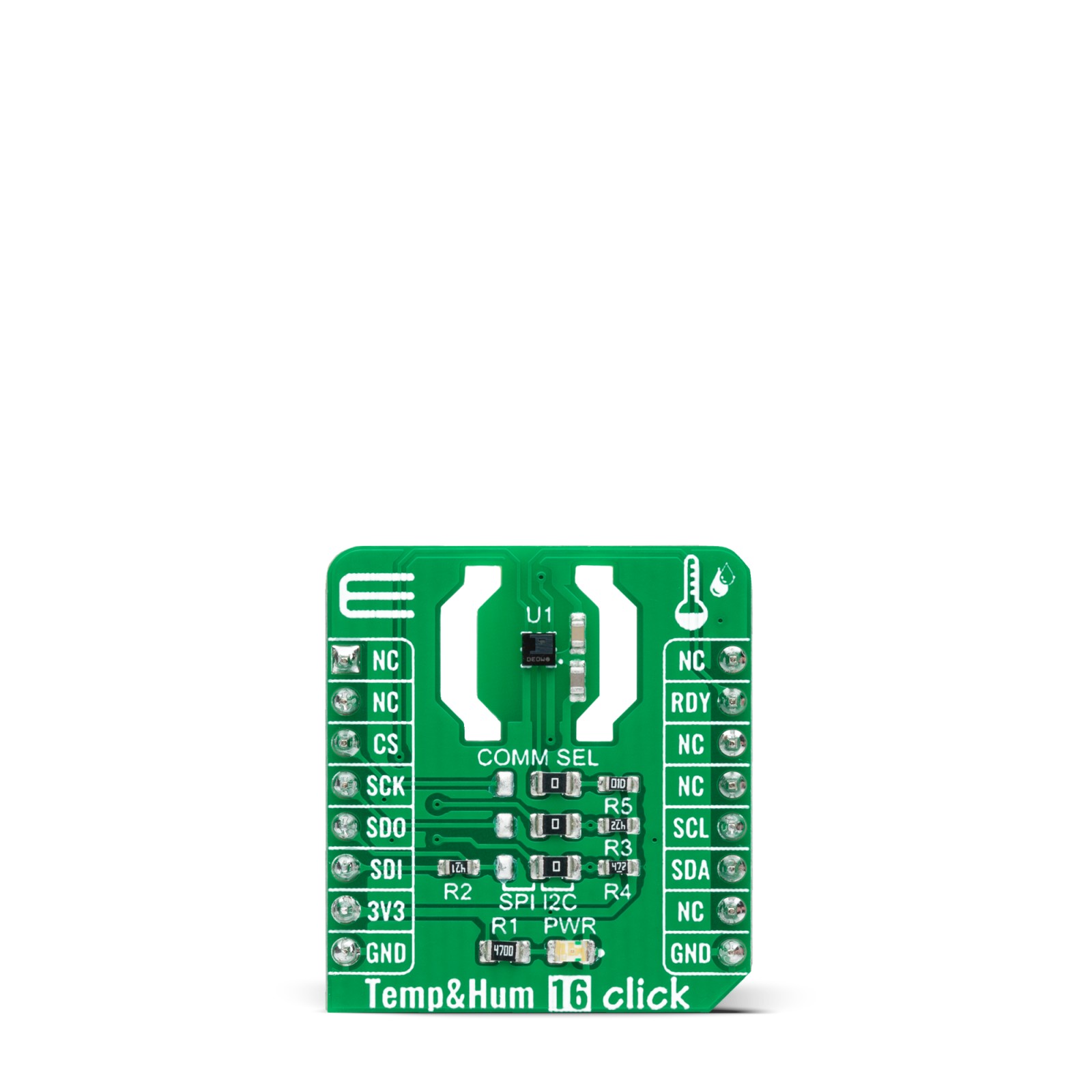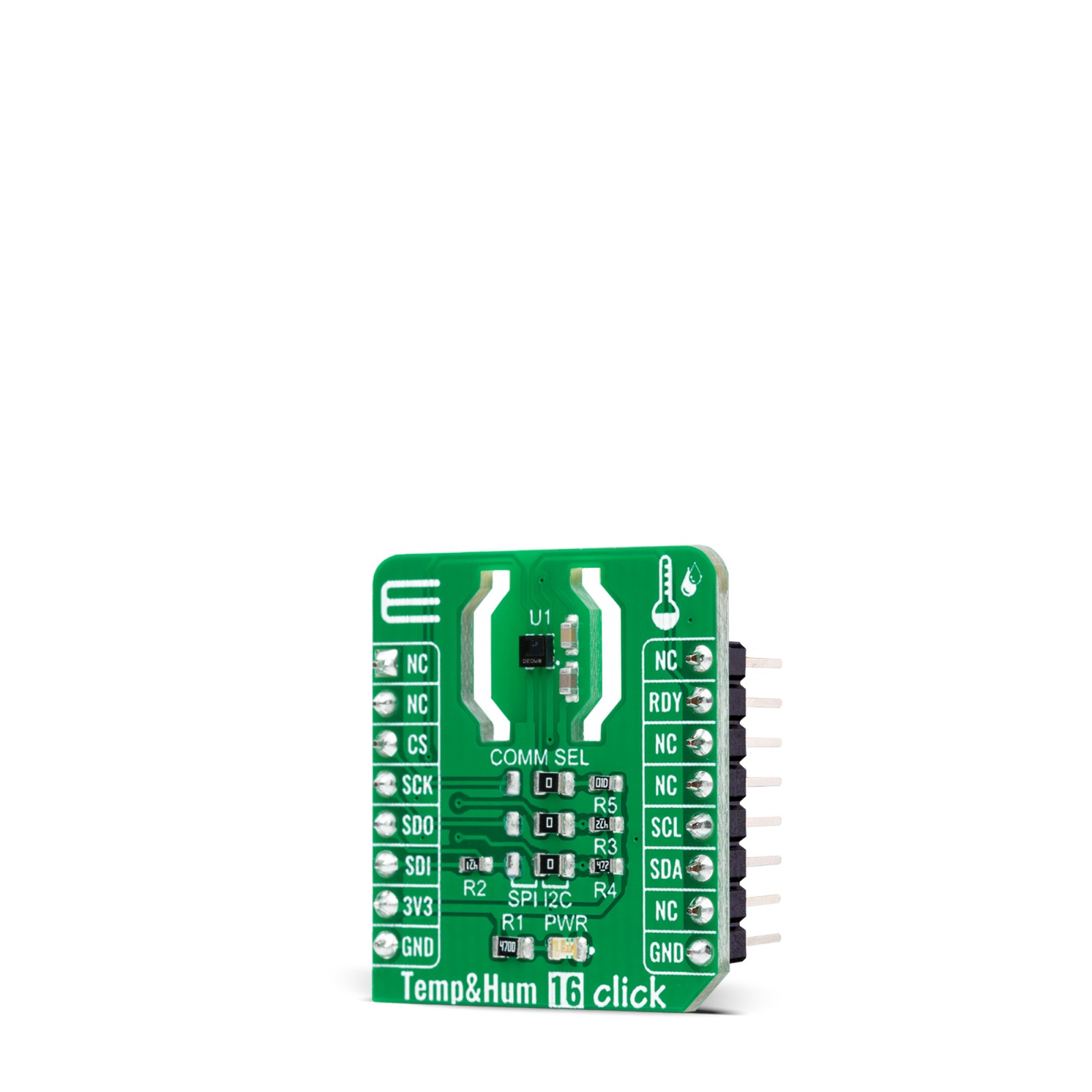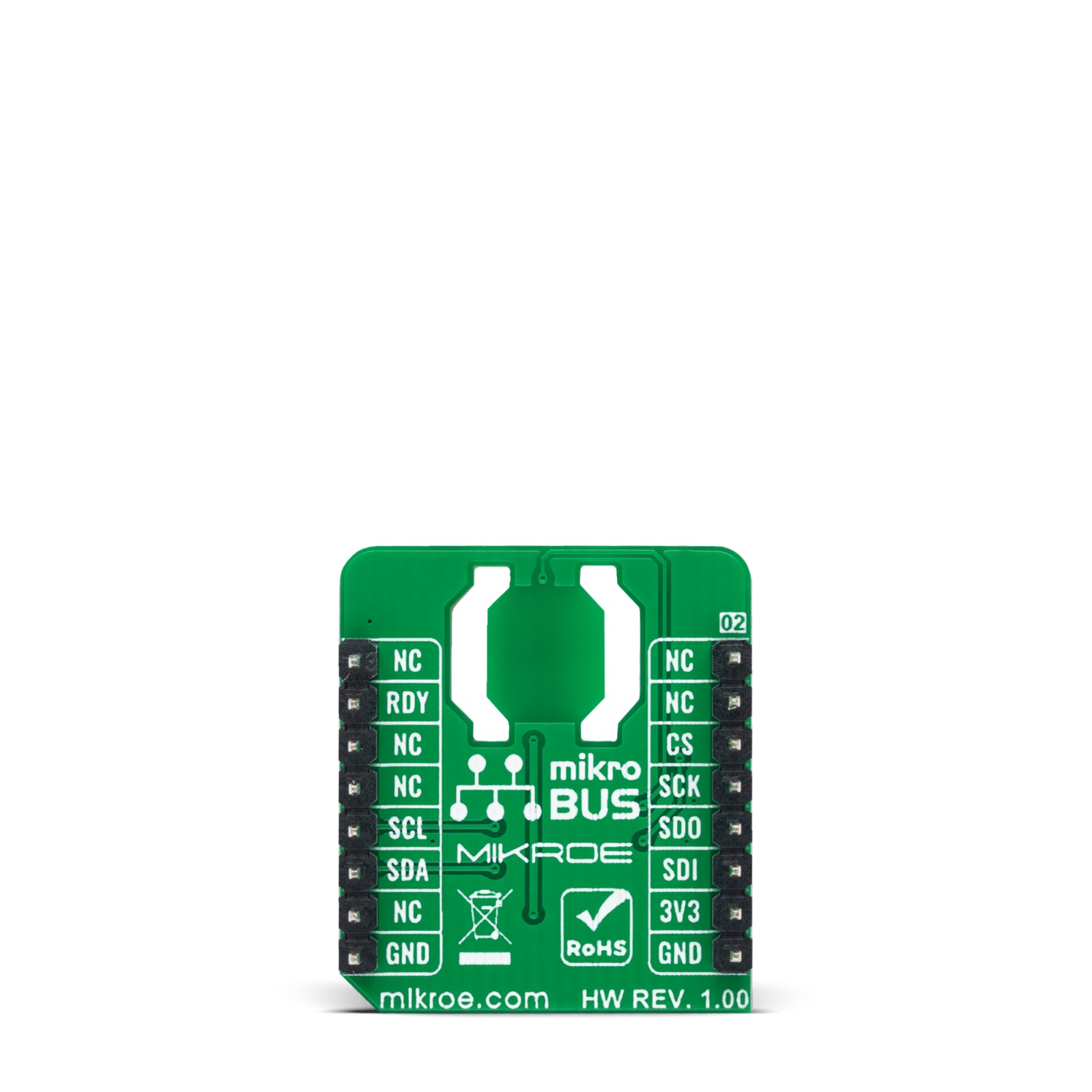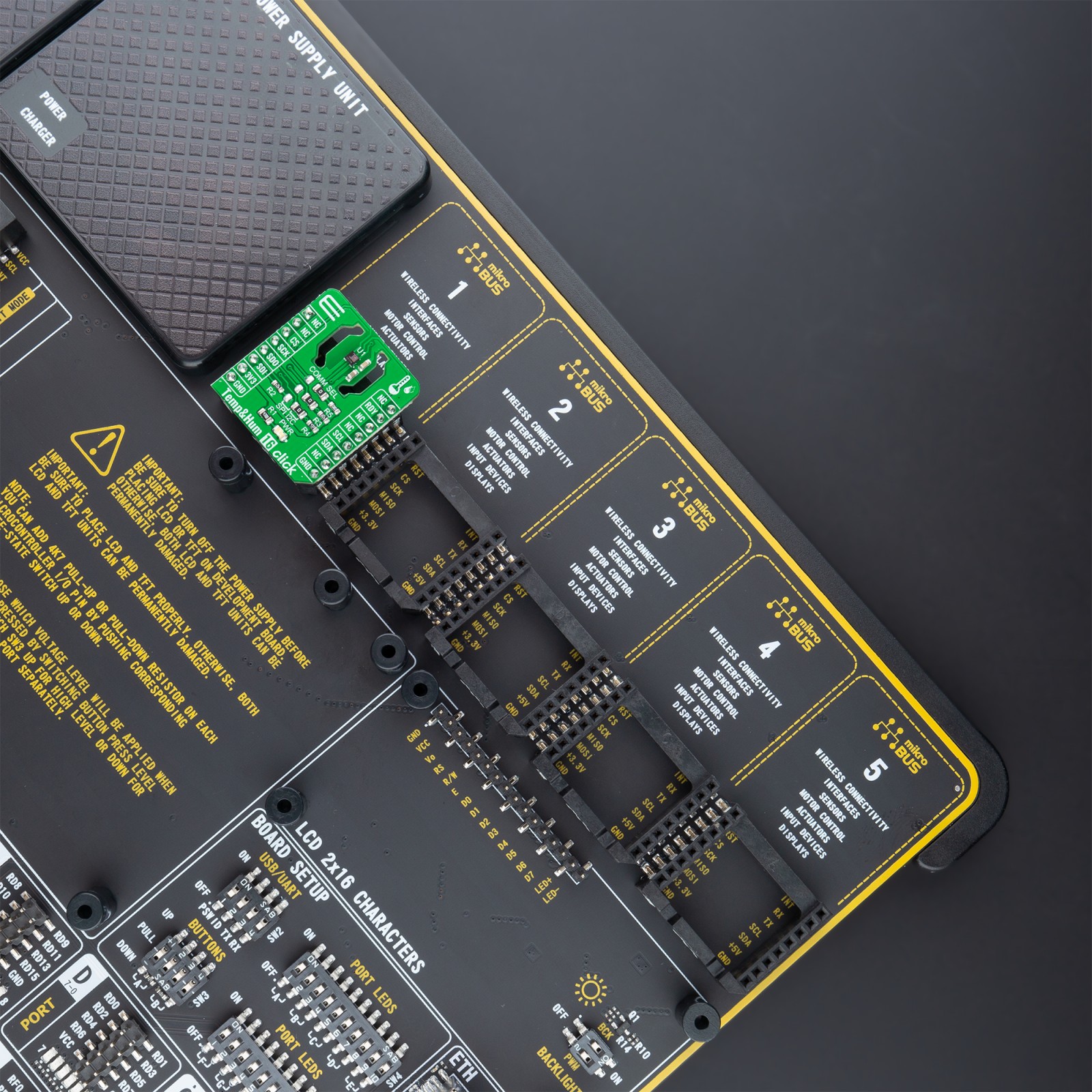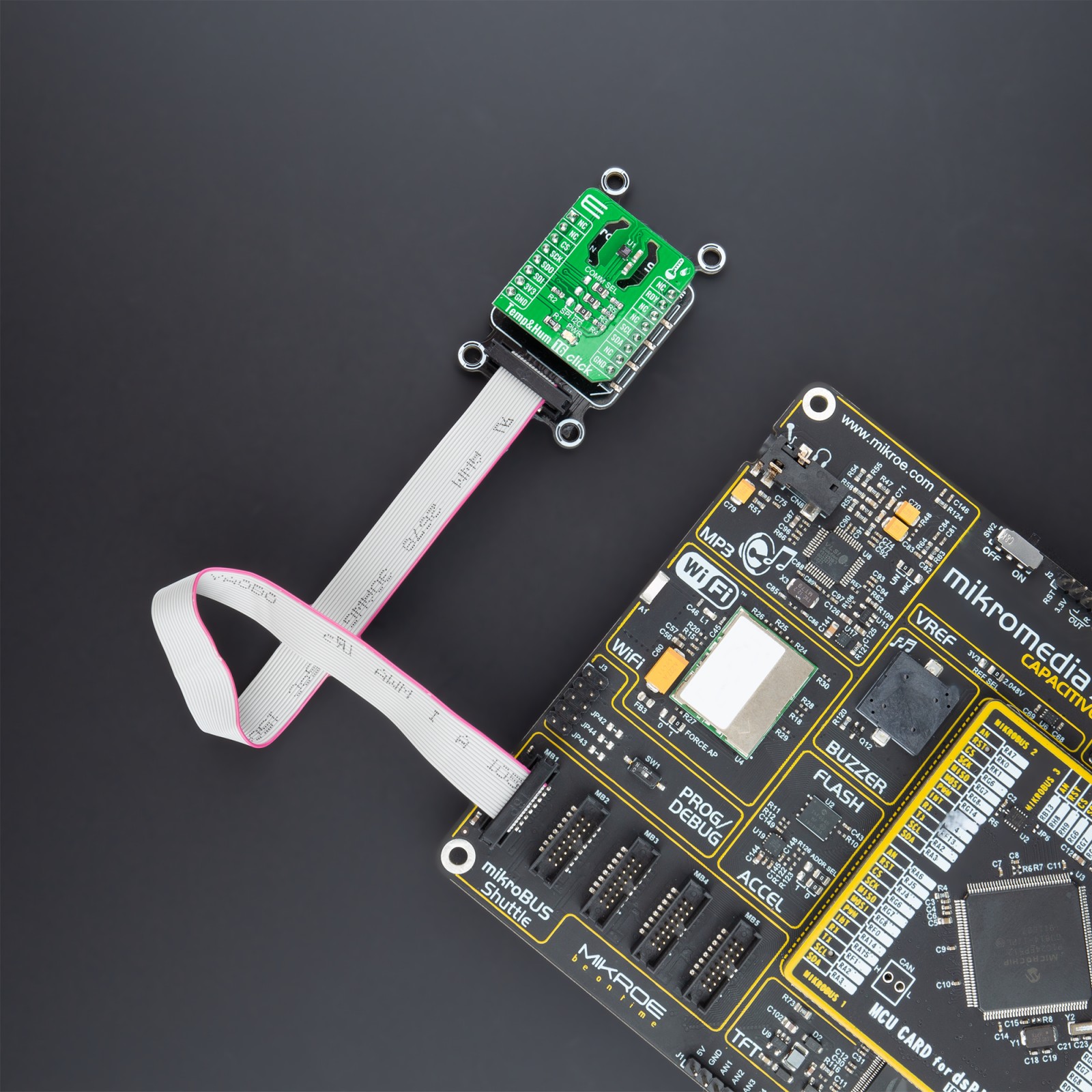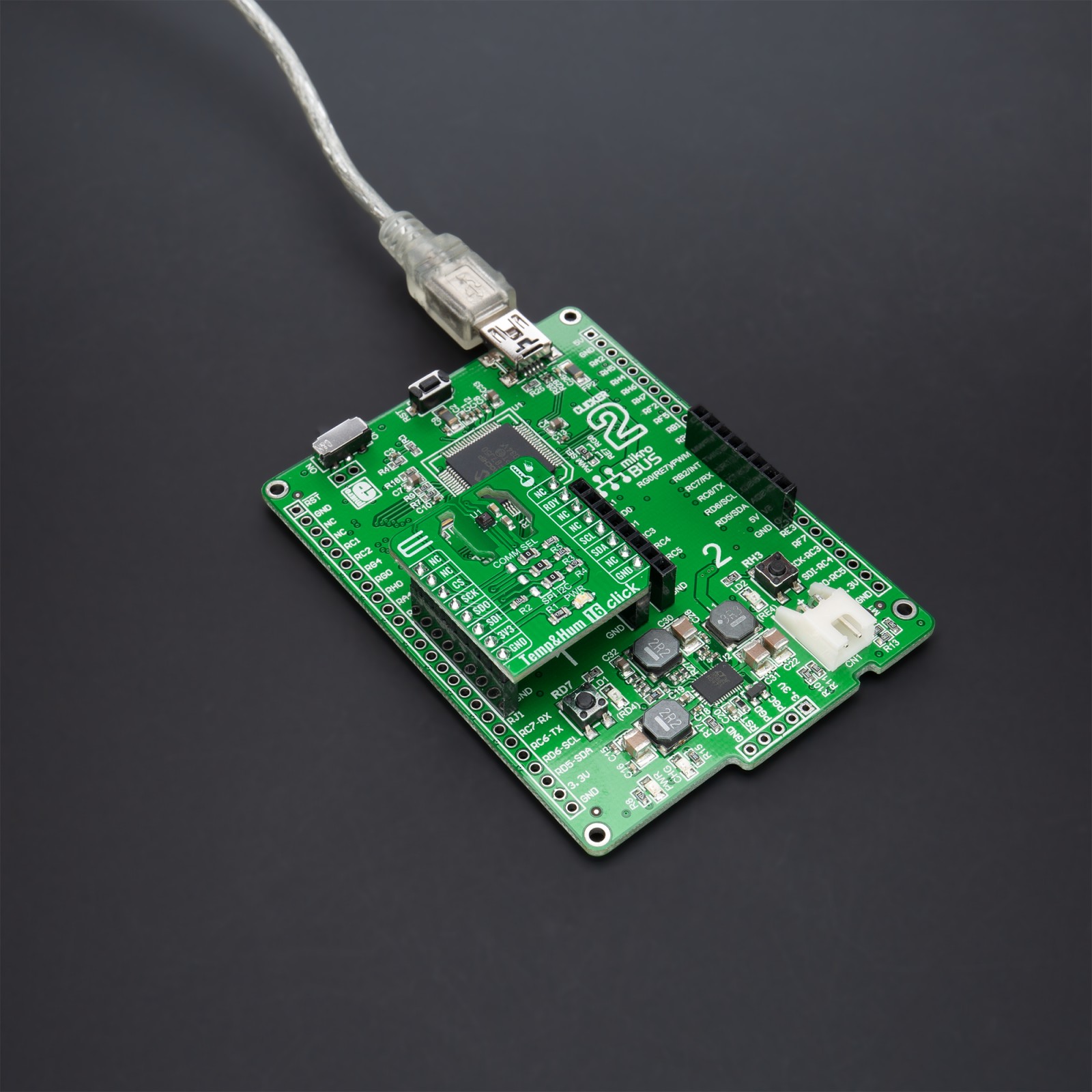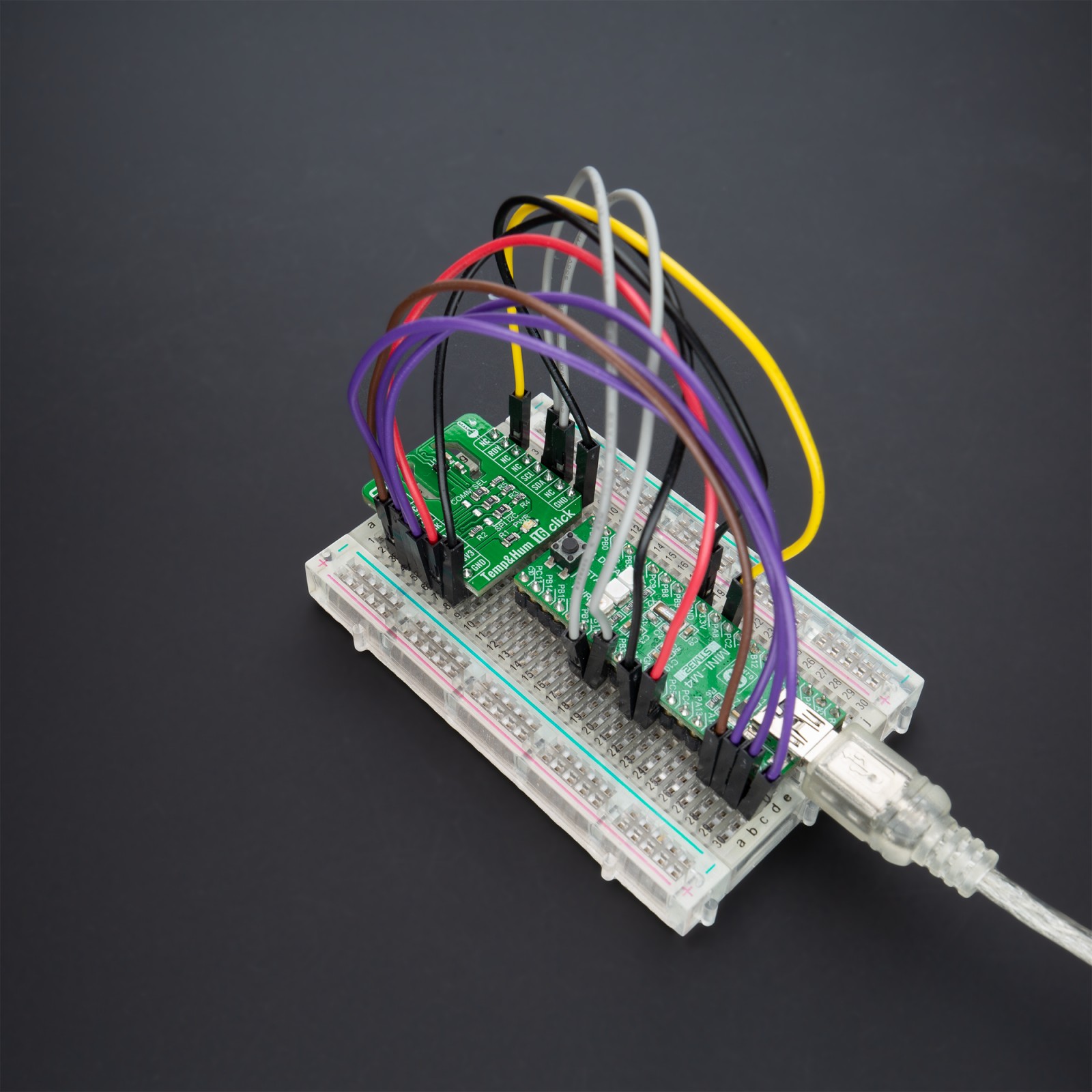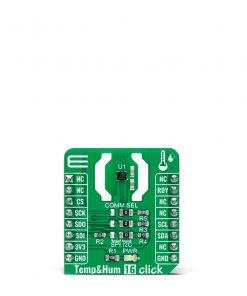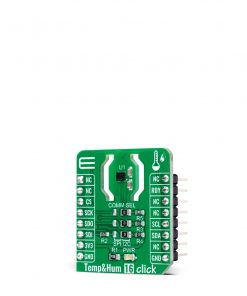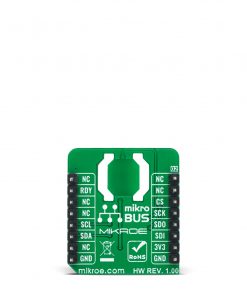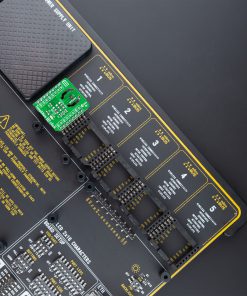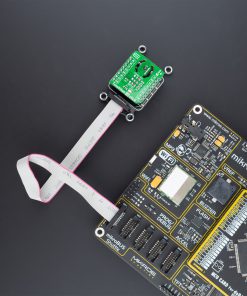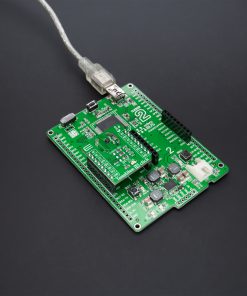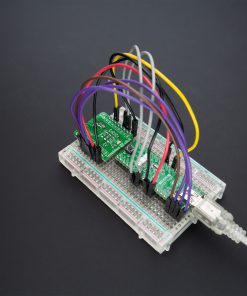Temp&Hum 16 Click
R330.00 ex. VAT
Temp&Hum 16 Click is a compact add-on board that represents temperature and humidity sensing solutions. This board features the WSEN-HIDS (2525020210001), a MEMS-based capacitive humidity sensor with an integrated ASIC and I2C and SPI serial communication from Würth Elektronik. A silicon-based temperature sensor is also integrated within the same package. ASIC contains the multiplier, operational amplifier, analog-to-digital converter, and other signal conditioning blocks like controller logics and interrupts. It converts the analog signal from humidity and temperature sensing elements into 16-bit digital humidity and temperature values. The WSEN-HIDS is factory calibrated for both humidity and temperature measurements with no further calibration required. This Click board™ is an ideal solution to be used in various temperature and humidity-related applications.
Temp&Hum 16 Click is supported by a mikroSDK compliant library, which includes functions that simplify software development. This Click board™ comes as a fully tested product, ready to be used on a system equipped with the mikroBUS™ socket.
Stock: Lead-time applicable.
| 5+ | R313.50 |
| 10+ | R297.00 |
| 15+ | R280.50 |
| 20+ | R269.94 |

